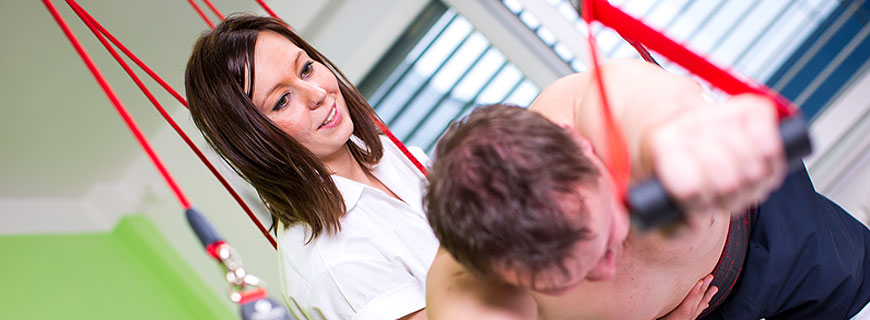
Institute of Physiotherapy
The structure and functioning of the human body, problems associated with scoliosis, flat feet, incorrect body or head posture, joint pain – these are the main issues studied by the experts in the Department of Physiotherapy at the Faculty of Health Sciences, Palacký University.
Physiotherapy – health, work experience, applicability
The Physiotherapy study programme combines theory and practice. Students learn how to examine the movement functions of the human body, propose a rehabilitation plan, and perform movement treatment for various diseases and injuries; how to assess the degree of the patient’s self-sufficiency, and suggest prevention measures and home self-therapy. They become familiar with a varied choice of therapies – from reflexive therapies such as the Vojta method, through techniques employing the patient’s will for movement control and methods using unstable surfaces, suspension devices, and various body support devices, up to various forms of electro- and hydrotherapies.
Movement in life
The department experts analyse problems in our everyday lives. They are interested in the differences between the children born premature and full-term, the movement capabilities of school children, the impact of heels on walking, the impact of certain diseases and injuries or even stretching exercises on the way of walking and muscle activation, and how muscle activity changes when we are able to watch the movement as compared to only imagining it. Advanced scientific procedures are used to monitor and evaluate movement demonstrations: goniometry, posturography, clinical tests and muscle testing, surface electromyography, and kinematic analysis.
Kinesiology Laboratory
The department, together with the Rehabilitation Ward of the Teaching Hospital Olomouc, possesses motor function analysis equipment in the Kinesiology Laboratory which is absolutely unique in the Czech Republic. The lab contains measuring technology such as a dynamic posturography system, surface electromyography systems, and treadmills with built-in force plates, which enable the objectification of walk cycle evaluation and the measurements of walking speed, step length and width, and forces during walking. Electromyography-compatible video cameras for synchronized EMG signal and image are used for graphic presentation and easier interpretation of results.